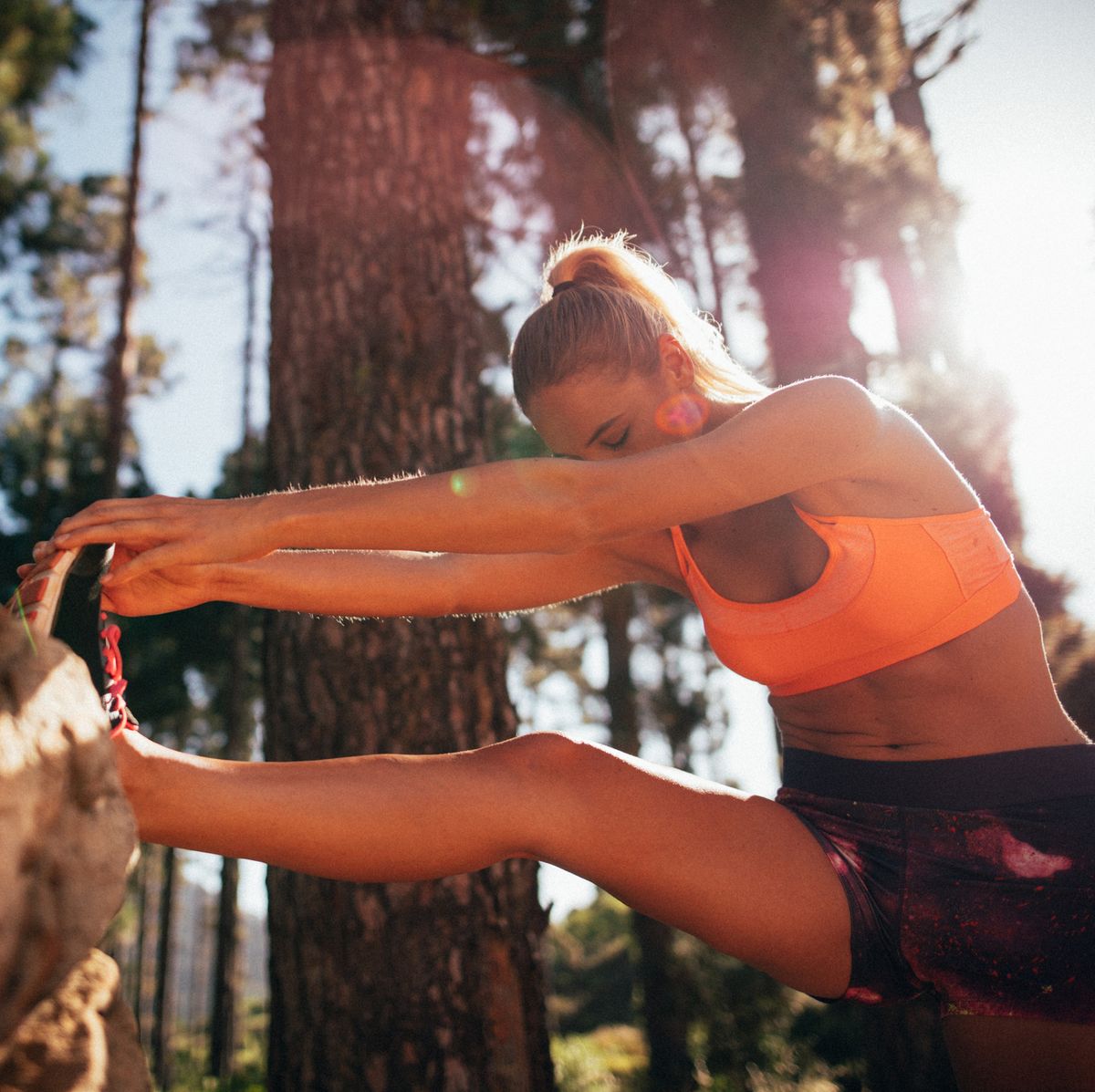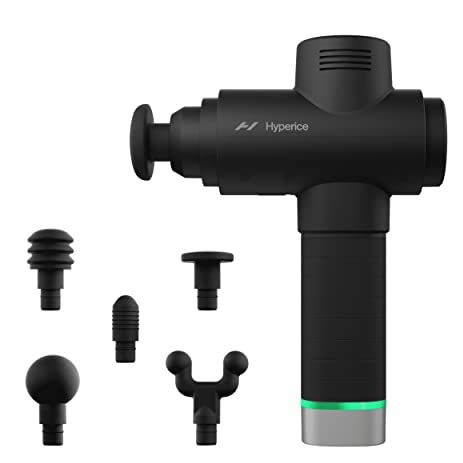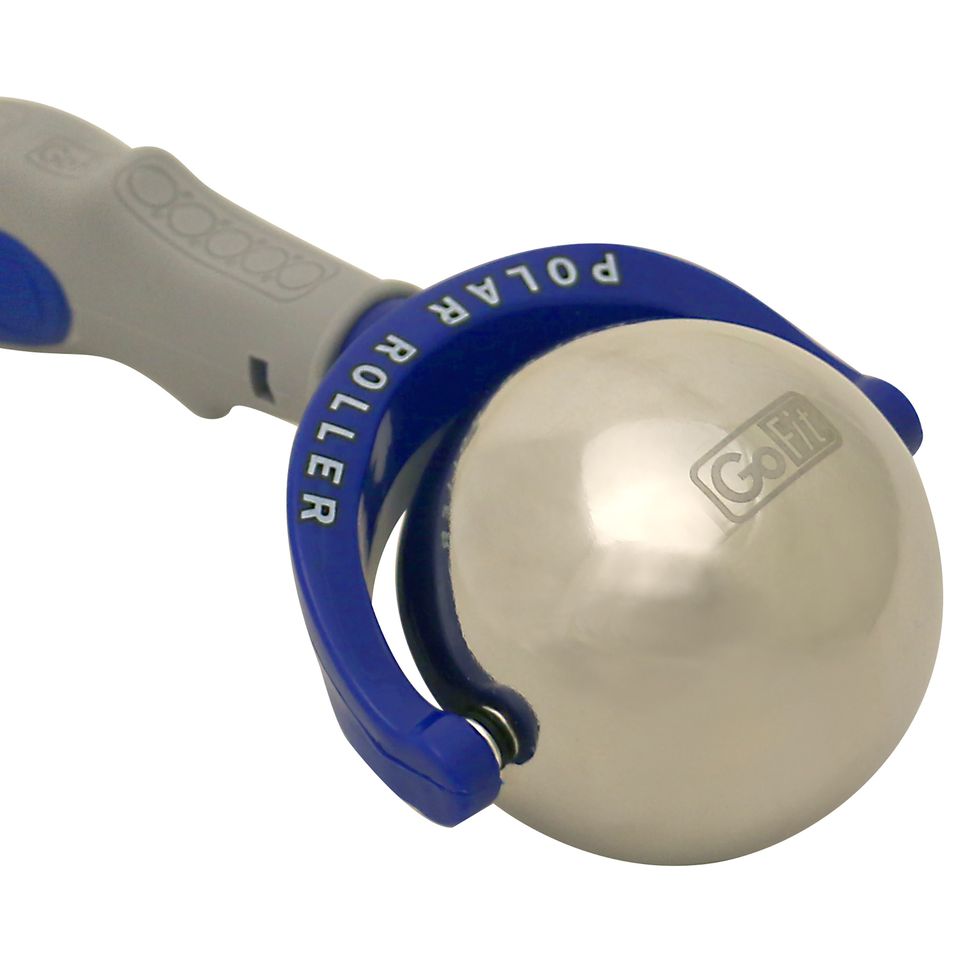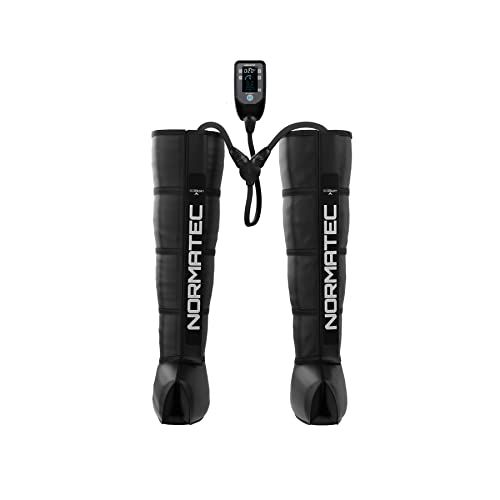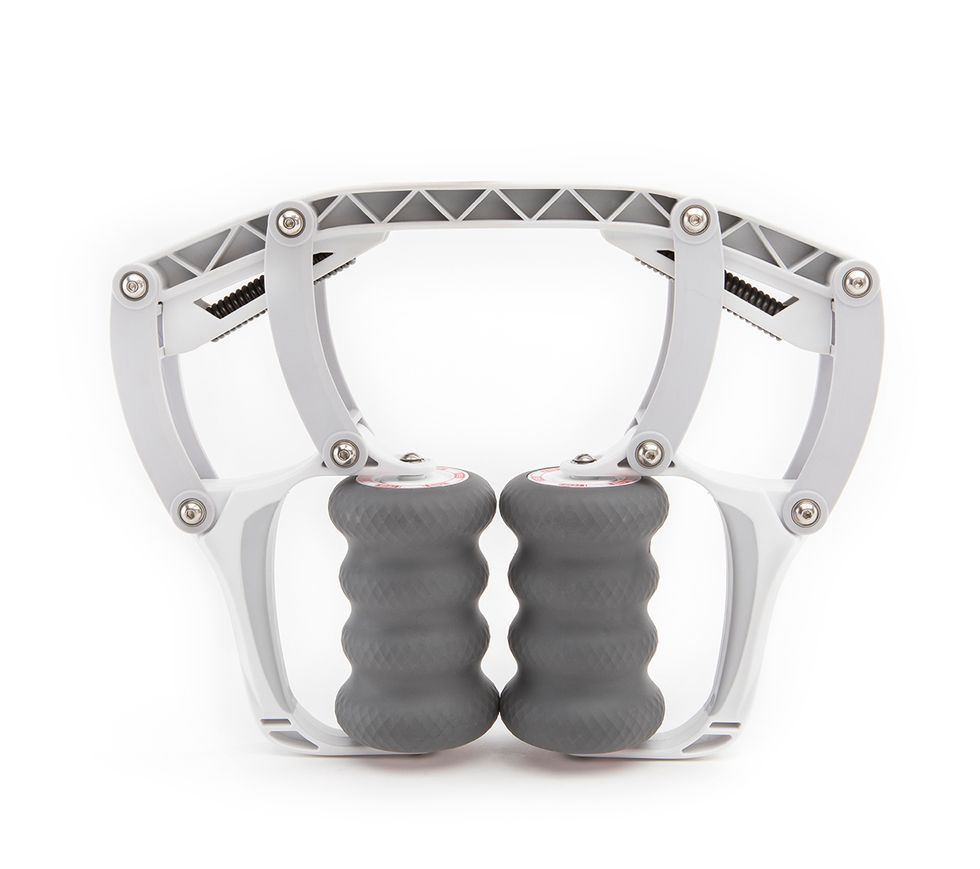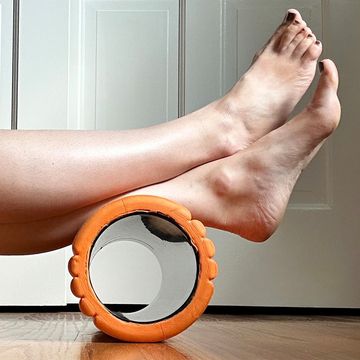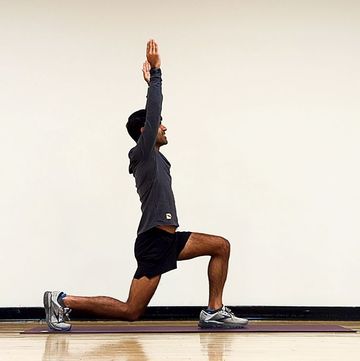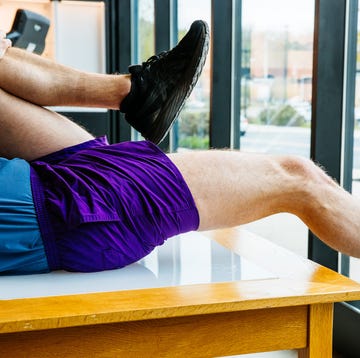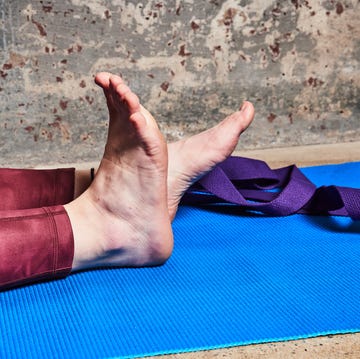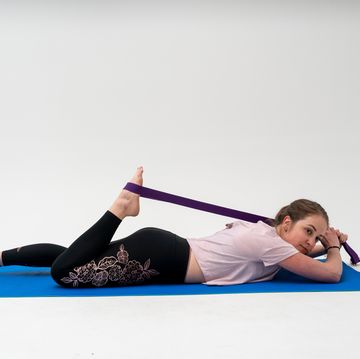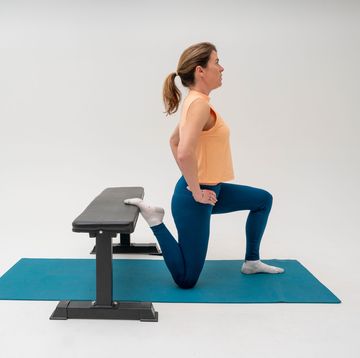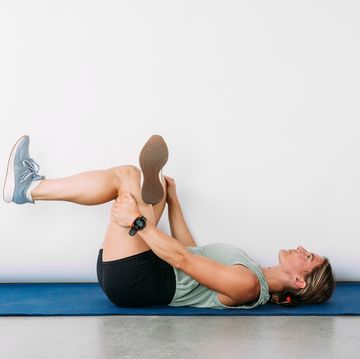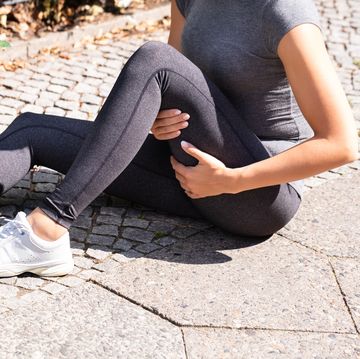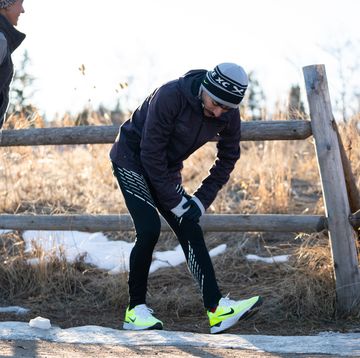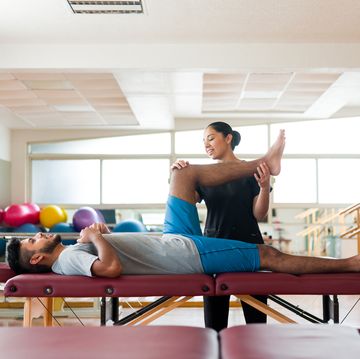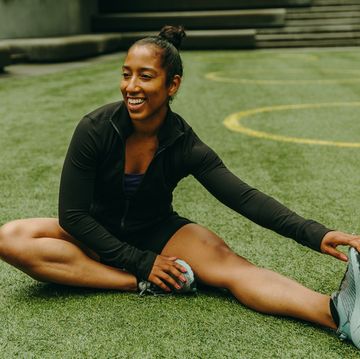When you’re feeling sore or tight in a particular area, it’s natural to think you should stretch it out. But the truth is that’s not always the best remedy—particularly when it comes to treating tight hamstrings.
The reason: When muscles like the hamstrings are tight it’s often because they’re over-lengthened (or over-stretched) already. (Just think about when you’re sitting on the couch, legs extended in front of you, up on the cushion—that’s your hamstrings in a lengthened state.) So stretching will not resolve the problem. In fact, you’re more likely to irritate the muscle even further.
When dealing with tight hamstrings, it’s usually helpful to look at the opposing muscle group (a.k.a. your quads) to figure out where the problem lies. Here’s a quick anatomy refresher to help us understand this issue, then how you can prevent and treat tight hamstrings.
More From Runner's World

How Your Hamstrings Work—and What Causes Tightness
The hamstrings attach to the ischial tuberosity, which is a part of the posterior (back) aspect of the pelvis and is typically where runners feel pain. The opposing muscle group for the hamstrings is the quadriceps. The quadriceps muscles attach to the anterior (front) aspect of the pelvis. The hip flexor muscles assist the quadriceps, and they attach on the anterior (front) aspect of the pelvis.
The hamstrings and quadriceps muscle groups work as opposing muscle groups to keep the pelvis stable; however, the movements and forces involved in running make this task much more difficult. Picture wires attached to either side of a telephone pole—the telephone pole being our pelvis and spine, the wires being the hamstrings and the quadriceps. The wires—or our opposing muscle groups—maintain tension on the pole and our pelvis and keep it in its proper position.
However, unlike the telephone pole, the pelvis has movement, so keeping it balanced becomes much more complicated. The quadriceps are generally a stronger muscle group than the hamstrings. This is evident when lifting weights, as most people can push more weight on the leg extension machine (quadriceps) than they can lift on the leg curl machine (hamstrings). This is a normal strength difference and when the muscle groups stay within their normal strength difference ratio, all is well.
On the other hand, this strength ratio can become off-balanced, especially for us runners. When this happens, it is typically the quadriceps that win the strength battle and begin to pull the pelvis into a slight anterior rotation or forward tilt (picture a slight arch in the low spine). The hip flexors get in on this action, too, and assist the quadriceps. As the pelvis rotates anteriorly, it raises or elevates the hamstring attachment site, which means the hamstrings get pulled up, and as the pelvis shifts, they become over-lengthened.
In the massage world, this over-lengthening is sometimes referred to as “locked long.” The hamstrings hang onto their attachment site for dear life—and of course, that can lead to tight hamstrings.
Over-lengthening a muscle greatly increases its risk of injury. Again, picture the telephone pole now being pulled to one side by a stronger wire. The other wire, or the hamstrings, is now being pulled and is over-stretched or over-lengthened. Along with over-lengthening the hamstrings, pelvic anterior rotation also shortens our back muscles. The typical scenario is tight, shortened quadriceps; tight, shortened hip flexors; tight, shortened back muscles; and tight but over-lengthened hamstring muscles.
Then, to compound the problem further, when we run, we swing the leg forward, the hamstrings are even further lengthened, and the stress on the hamstrings, especially at the attachment site, is increased even more. This additional stress puts your hamstrings at a greater risk of injury. This can result in tendonitis and even muscle tearing. Pain is the first warning sign, and you are wise to pay attention to this signal.
So, now that you understand how the hamstrings work, let’s figure out how to solve the issue.
Here are 10 expert-backed tips to help you give your tight hamstrings a little extra TLC. Each of the hamstring exercises and hamstring stretches below are demonstrated by Jess Movold, Runner’s Wold run coach, so you can learn the proper form.
5 Exercises to Prevent and Treat Tight Hamstrings
1. Stretch and roll your quadriceps and hip flexors regularly. Try this standing quad stretch:
How to do it: Stand with feet hip-width apart. Bend left knee, foot coming behind you, and grab with left hand. Tuck pelvis slightly forward, bring knees closer together, engage left glute, and then send left knee back until you feel a stretch. Repeat on the other side.
2. Gently stretch your hamstrings:
How to do it: Lie faceup. Extend one leg straight up in the air, foot flexed and gently drawing toes toward forehead. Gently pull leg toward chest with hands. Repeat on the other side.
3. Warm up your spine and perform a cat-cow, a low-back stretch and pelvic tilt exercise to stretch your low-back muscles:
How to do it: Start on all fours, with knees right under hips and hands right under shoulders. On an inhale, arch spine and look up toward ceiling, dropping belly toward floor. On an exhale, pull belly button up toward spin and tuck chin to round spine. Continue alternating.
4. Strengthen your core muscles, especially the abdominal muscles, by incorporating planks into your routine:
How to do it: Place forearms on the ground, elbows right under shoulders and step feet back. Body should form a straight line from head to heels. Engage entire body and breath deep as you hold.
5. Strengthen hamstring muscles with single-leg glute bridges:
How to do it: Start lying face up, knees bent and feet planted on the floor. Lift right leg up, foot off the floor. Arms extend down by sides. Drive through right foot, engage glutes, and lift hips up toward ceiling. Slowly lower back down and repeat. Then switch sides.
By performing this move on one leg at a time, you can identify imbalances you have. Focus on moving the muscle through its full range of motion, hold it briefly at the top of the action, and then slowly lower hips back down. Add 3 sets of 10 to 12 reps to your routine twice per week.
Other Ways to Address Tight Hamstrings
- Ice the attachment site immediately after any exercise for 15 to 20 minutes. Try wearing compression shorts to help support the affected muscles while doing physical activity, too.
- Cross-train with the stair climber or swimming to keep cardio up. Stair climbing uses a smaller stride, so this action may not bother your hamstring. (If it does, try something else.)
- Massage therapy can help by relaxing tight muscles, improving flexibility, facilitating circulation and healing, and restoring joint range of motion.
- Visit your physician if the pain is persistent, if you are limping or altering your gait in any way, and especially if you notice any bruising.
- Physical therapy can aid in healing the hamstrings and correcting any muscle weaknesses or imbalances.

Susan Paul has coached more than 2,000 runners and is an exercise physiologist and program director for the Orlando Track Shack Foundation. For more information, visit www.trackshack.com.
